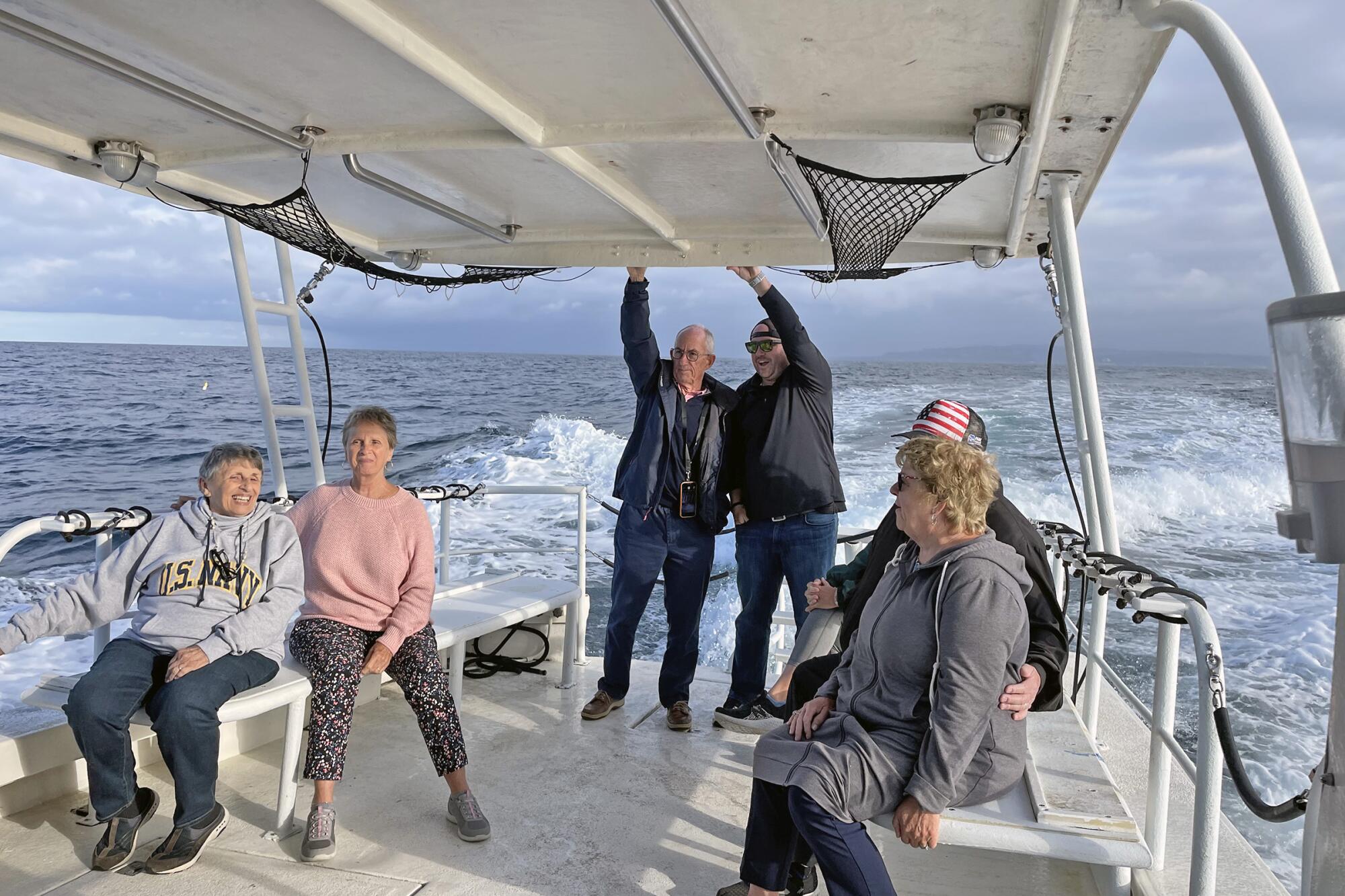
SAN DIEGO â Janet Dunne made peace a long time ago with the awful curveball life threw her in 1968. She considers herself blessed for the happiness that came after.
So it wasnât closure she was seeking when she got on a boat in San Diego a few weeks ago, flowers in hand. Her destination was an area above the wreckage of a Navy helicopter resting on the ocean floor. The crash killed the co-pilot: her husband, Gus, the father of their unborn child. Gusâ body was never recovered.
This story is for subscribers
We offer subscribers exclusive access to our best journalism.
Thank you for your support.
Dunneâs escorts to the site were two deep-sea divers who discovered the debris field earlier this year and spent hours deciphering clues and consulting military experts to figure out the likely identity of the Sea King. There are others out there, off the shores of this longtime military town.
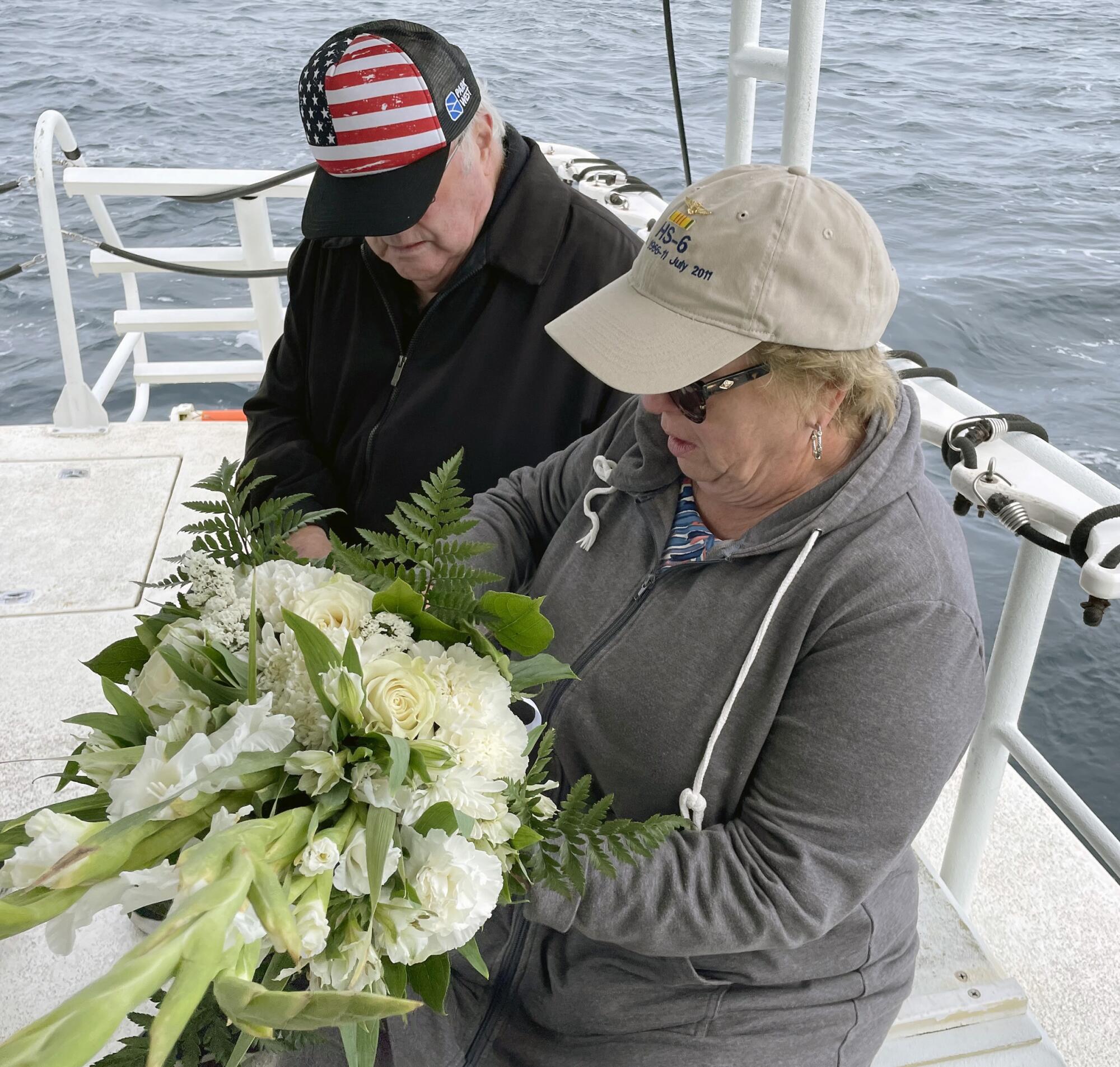
Also on the boat were two of the co-pilotâs sisters, women from Florida and Georgia whoâd never had a chance to say goodbye, and one of his crewmates, who survived the crash because a small fishing boat was near enough to rescue him.
Happenstance, fate, God â everybody on the boat had to wonder about the forces that brought them together, the connections made against the odds, across the years. The shared humanity.
On the way out, Dunne thought about her husband and the day she lost him. He was her first love. So many emotions swirled around her on the boat, but the one that lingered was gratitude. Thanksgiving had come early.
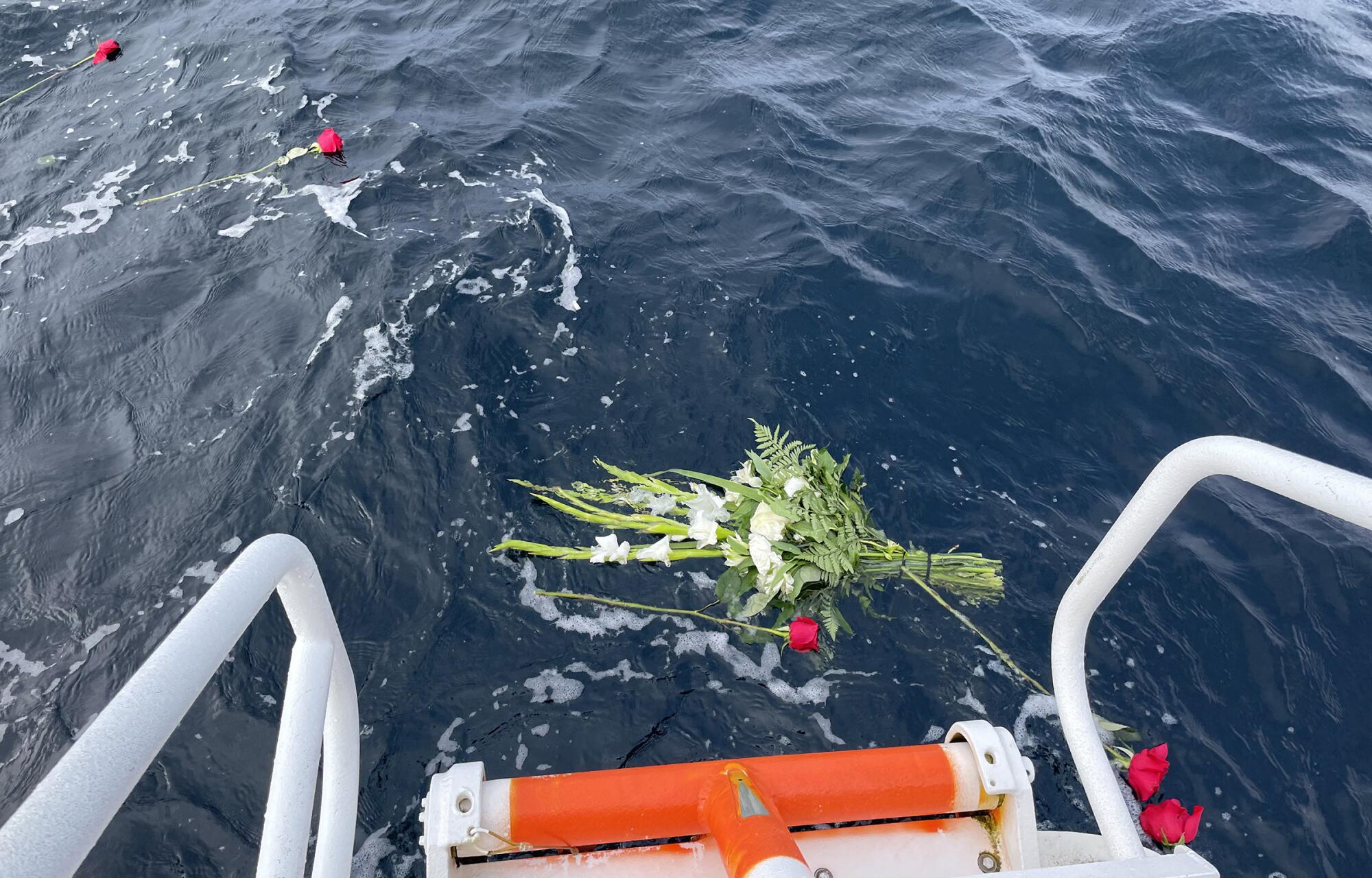
When they got to the place, several miles off Imperial Beach, the captain cut the engine and the boat floated on the gently rocking waves. The skies were overcast, the sea gray: A storm was due, but not yet. Dunne handed out red roses sheâd brought for the occasion, as well as small polished stones with âuntil we meet againâ etched on them.
Memories were shared, eulogies spoken, prayers offered. Tears fell. They dropped the roses and the stones into the water.
âOne of his sisters said, âIâve been waiting 53 years for this,ââ Dunne recalled later, back at home in Mission Viejo. âI was never waiting, because I never dreamed that anything like this would happen. It just never crossed my mind.â
Flame out
Sept. 3, 1968, was a Tuesday, a fine afternoon for a test flight.
The Sea King had just undergone a major overhaul at Naval Air Station North Island and had to be put through its paces before returning to duty with an anti-submarine squadron attached to the carrier Kearsarge.
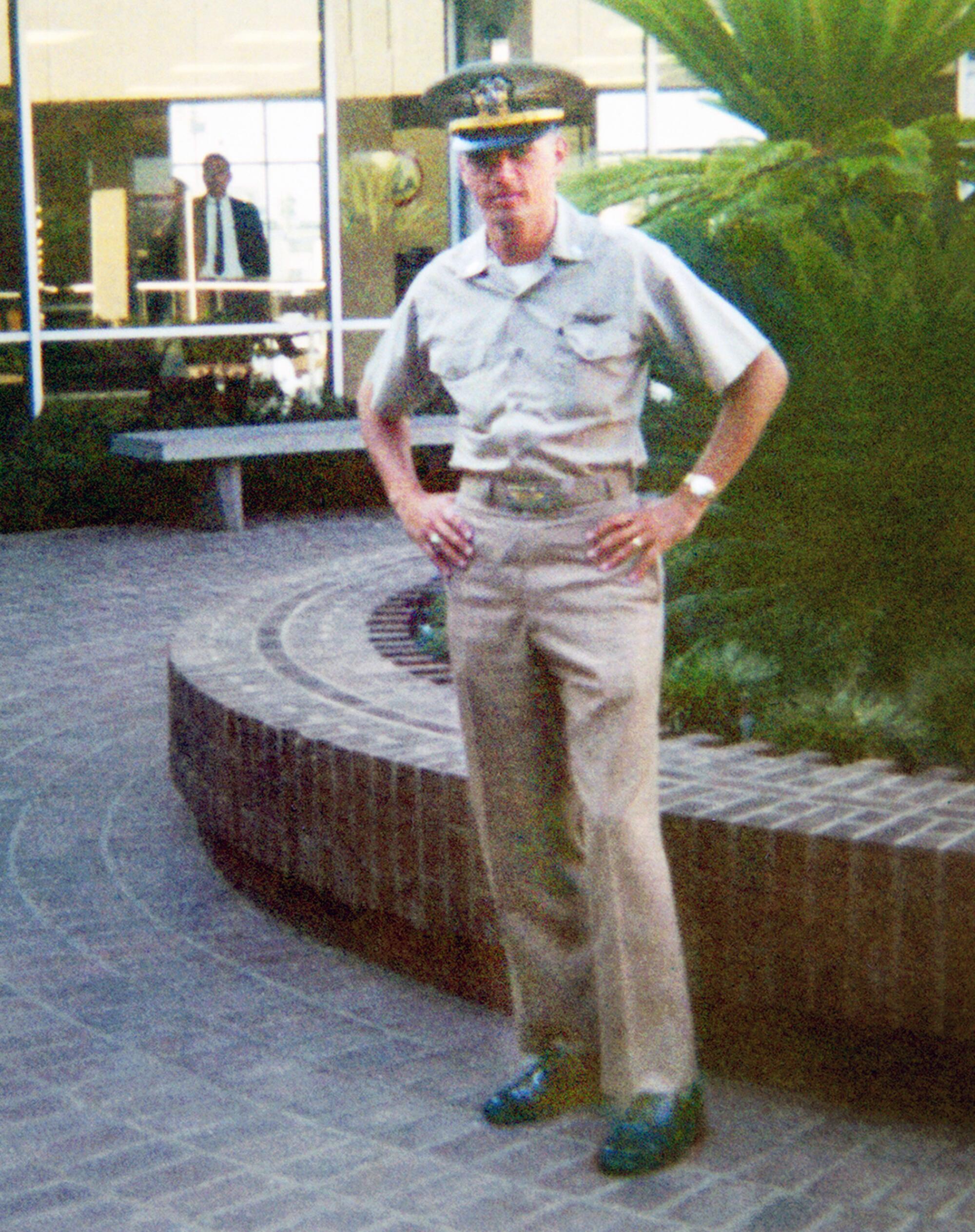
Pilot Don Sanborn, 26, and co-pilot Gustav âGusâ Herrmann, 25, lifted off with electricianâs mate Robert May, 27, aboard. After some hover testing over land, they headed out to sea, where they began checking the fuel-pump equipment.
They were about 200 feet above water when both engines flamed out from what investigators later concluded was an electrical malfunction. The copter plummeted.
Sanborn and May surfaced moments later, their helmets ripped off and their life vests shredded by the impact. A short distance away, three spear fishermen in a small boat saw the crash and came to help.
Sanborn was having difficulty breathing. Heâd sucked in salt water and aviation fuel as he swam to the surface. May had a bump on his head and a cut near one eyebrow. They were pulled from the water and taken to a hospital.
Back on dry land, Herrmannâs wife answered a knock on the front door. Her husband was missing.
The two had met at a Catholic high school dance in New York when she was 15 and he was 18. They knew early on that they wanted to marry, but put it off until he finished his Navy training and she finished hers in nursing. Then he got sent to Vietnam, and they put it off again.
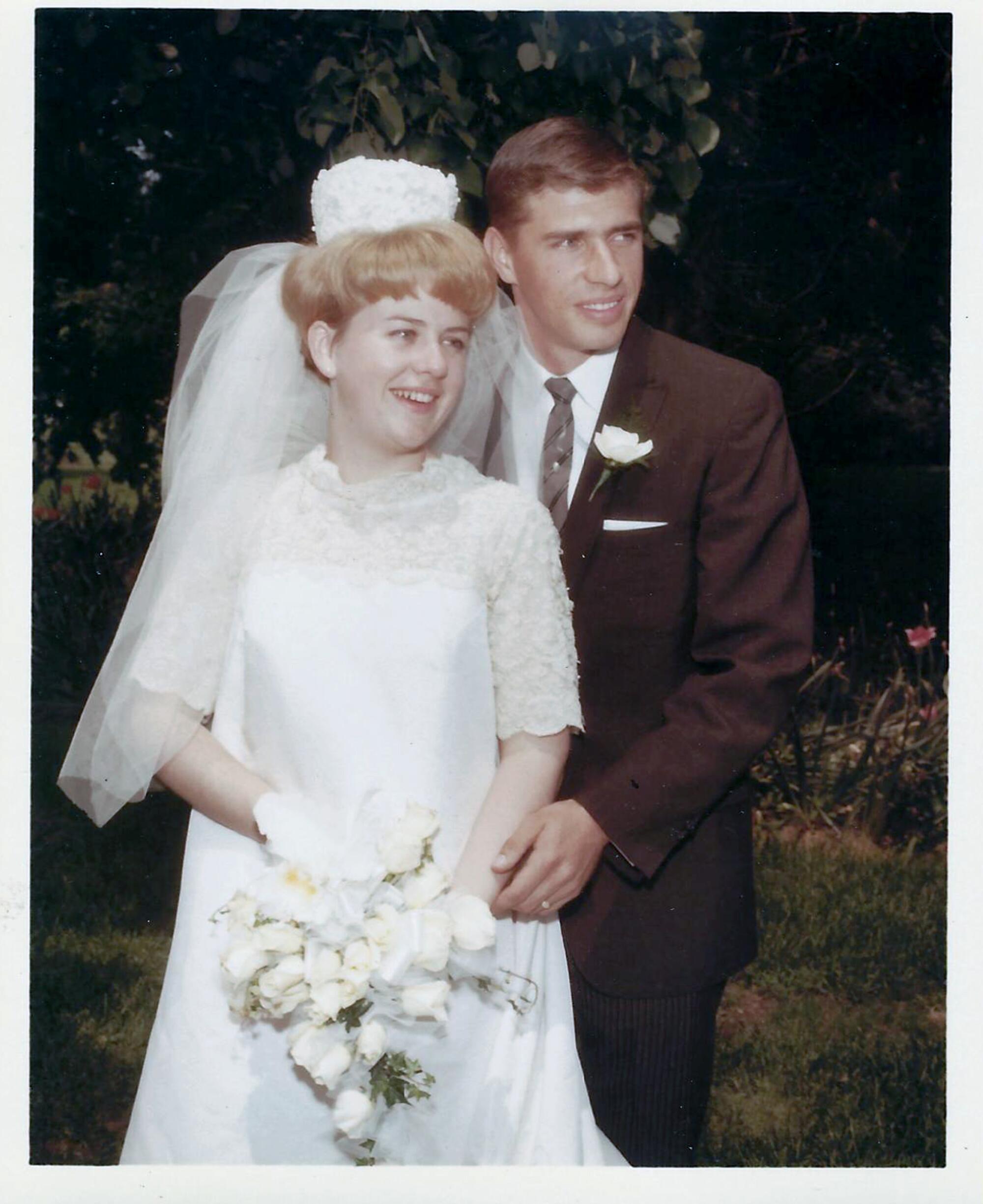
The waiting had lasted seven years when they finally made it to the altar on May 25, 1968. One hundred and eight days later, he was gone.
Navy searchers found only one sign of Herrmann, his helmet. It was crushed. Officials told the family he probably died on impact â small comfort amid so much grief.
âNot having a body to bring home was so hard for all of us,â she said. âI did think for a long time that he would wash up somewhere, and that they would find him. But it didnât happen, and at some point I had to accept that thatâs the way it was going to be. I had to close that door.â
Others opened.
âA beautiful lifeâ
She grew up in a hurry. She was 22 and pregnant with a girl due in about six months.
Her family brought her home to New York, where she moved in with her parents and got back the nursing job that sheâd left to come to San Diego with her husband.
âI was so fortunate to have all that support,â she said. âUntil I started putting one foot in front of the other, saw that I could do it, I thought it was all over for me.â
Before too long there was another man in her life. Peter Dunne was a Navy veteran. He fell in love with her, fell in in love with her daughter. Denise was 3 when they got married.
The Dunnes moved to Southern California and made a life here. Theyâre coming up on their 50th anniversary. She stayed in nursing, he worked mostly in sales. Denise grew up to be a nurse, too, and a university professor. Sheâs married and lives in Texas.
Janet Dunne looks back on all that with wonder. âAt the time of the accident, I would never have predicted all the happiness Iâve had,â she said. âItâs been a beautiful life.â
Sheâs always encouraged her daughter to learn as much as she could about the father she never met and his family, the Herrmanns. Denise eventually made her way to a Facebook page for veterans of his Navy helicopter squadron.
One day earlier this year, she heard from a squadron member who was one of her fatherâs best friends. He told her about the divers and their discovery of the helicopter.
She called her mother. âI hope youâre sitting down,â she said.
The divers
Brett Eldridge and Tyler Stalter are history buffs who enjoy exploring known wrecks and finding unknown ones. They like solving mysteries that haunt people wondering about what happened to loved ones lost at sea.
After their sleuthing on the Sea King, Eldridge wrote a post on his blog, Stalter reached out to various veterans groups and before too long dots got connected: Janet Dunne in Mission Viejo, the pilot Don Sanborn in Las Vegas, the Herrmann sisters back east, the captain of the spearfishing boat in Carlsbad.
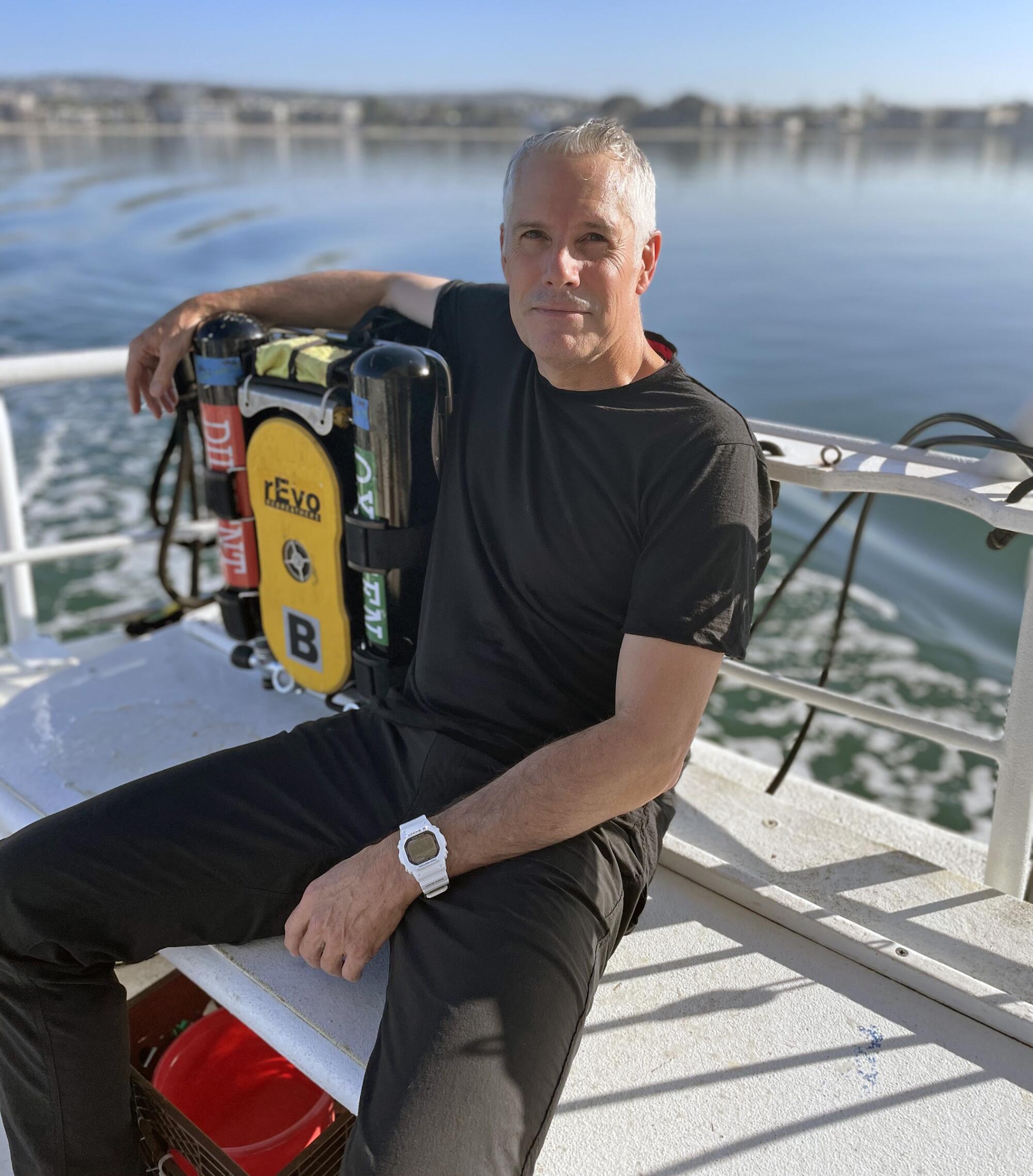
âItâs just amazing to me,â Dunne said. âThe divers are two men who had nothing to do with this helicopter, who werenât part of the military, but they were so persistent in solving the puzzle. I have such admiration for their tenacity.â
Sanborn thought it might be nice to put a wreath in the water over the wreckage, a time-honored way of remembering the fallen. When he told the divers, they offered to take him. And pretty soon they had a full boat.
Sanborn is 79, a retired real estate executive. On his way to San Diego, he stopped first in northern San Diego County to have dinner with the spearfishing captain, Wayne Kanakaris.
Sanborn had his son Blake with him â heâs a pilot, too, and would never have been born if his father hadnât been rescued.
Kanakaris told them how lucky he felt to have been there that day. They were in the area because the fishing had been bad near the Coronado Islands. Theyâd left early.
âWe were the only ones around,â he said. âI think it was just meant to be.â
Peace settles in
All sorts of âwhat ifsâ floated in the air the next day as the boat made its way toward the crash site. Janet and Peter Dunne were there, along with Herrmannâs sisters, Ann Joy and Claire, and two of his nieces.
âThere was always a hole in the family, a missing piece,â said Lynn Page, one of the nieces, who flew in from Memphis, Tenn., for the gathering. She was 6 when her uncle disappeared and grew up inspired by his service and sacrifice. She spent 20 years in the Air Force. âIt felt a little surreal, to finally have this chance to put him to rest.â
Janet Dunne had struggled after first hearing about the wreckage find. âIt brought back every single possible emotion and gut-wrenching, sick-to-the-stomach feeling of the day that I lost him, even though itâs been 53 years,â she said.
Part of it was imagining his final moments, and part of it was reliving the anguish of never finding his body. But in the boat, on the water, a kind of peace settled in.
âIt was his day to die,â she remembered thinking, âand there was nothing that anybody controlling anything could have done to change that.â
Sanborn wondered if thatâs how she felt. He had flown with her husband a couple dozen times, but he didnât know her. They went their separate ways after the crash. On the boat, he worried what her reaction to him would be. Gracious, it turned out.
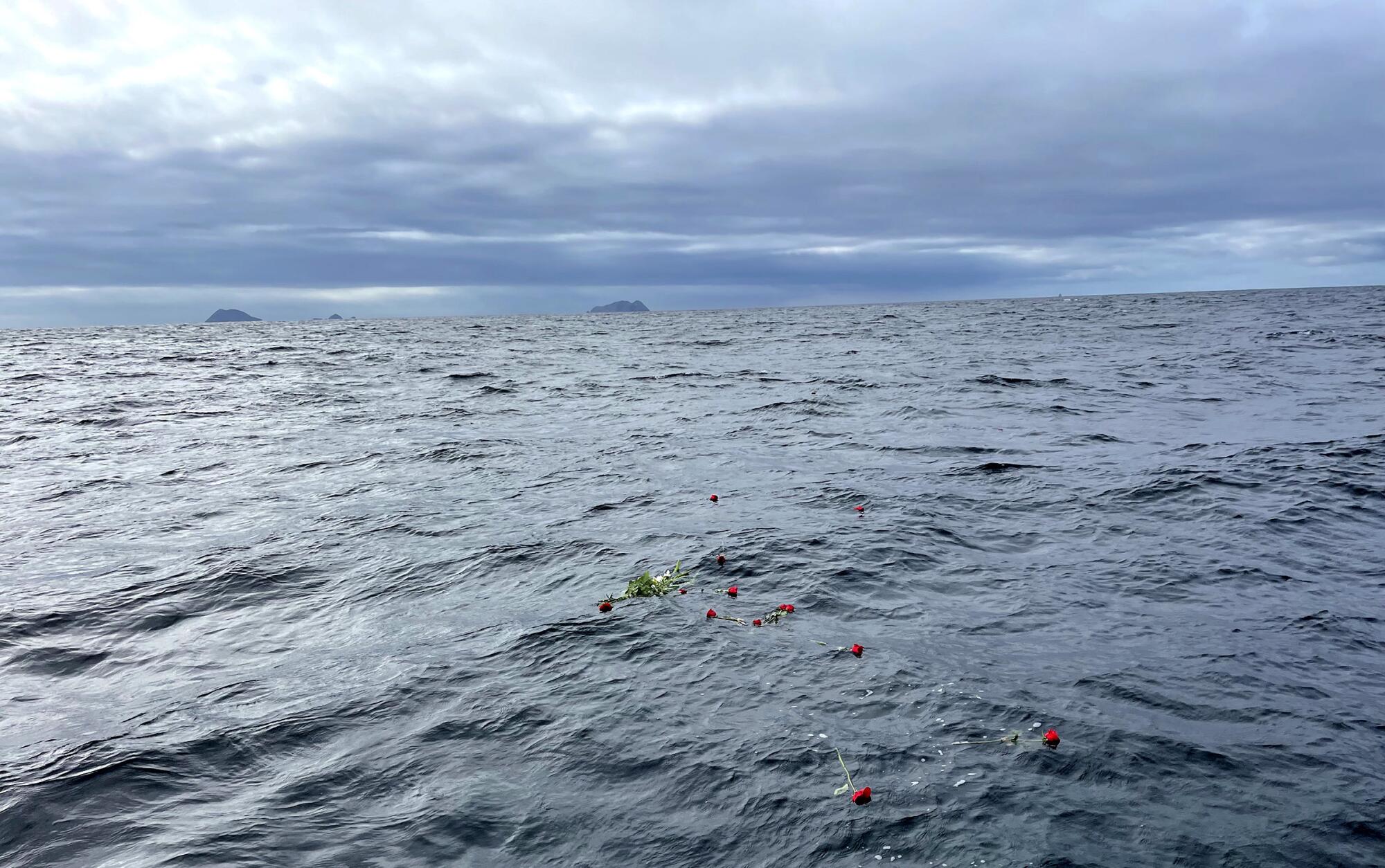
âWhen your life is saved and someone else dies â everyone in the military knows how hard that is,â she said. âIâm sad that he ever wondered.â
Sanborn said he found some peace, too, out there on the water, in that place. âI was remembering what a great pleasure it was to fly with him,â he said.
Dunne thought about the flying part as well.
âI think we all went out there in our own ways to say goodbye,â she said. âIâm so grateful that it happened â grateful for the opportunity to pay our respects to a really, really fine man who died doing what he wanted to do with his life.â
More to Read
Sign up for Essential California
The most important California stories and recommendations in your inbox every morning.
You may occasionally receive promotional content from the Los Angeles Times.











